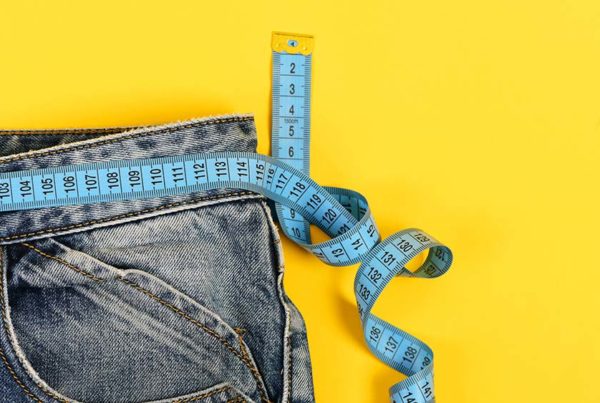
Low-cal eating can increase energy levels, prevent and treat disease and positively influence aging. However, it also can also trash metabolism, increase body fat and lead to malnutrition. Here are some physio-LOGIC tips for doing it right.
It’s an old worn-out theory that’s still popular — calories in, calories out. Most people believe the less calories consumed the more weight loss. But this theory is not physiologically logical.
Of course, the notion has been inaccurately accepted as “conventional wisdom,” partially contributing to the 40-year explosion of people overfat and obese that continues to this day. In addition to the continued popular and successful low-cal marketing, governments are on the bandwagon too. The U.S. Department of Agriculture says just reducing calories results in weight loss, even if you eat junk food. Of course, governments also subsidize junk food, so there’s clear corroboration. Nevertheless, today’s scientific studies don’t support that idea.
Thanks to these recommendations, and the heavy consumption of junk food, especially sugar, there continues to be a raging global overfat pandemic, including many normal-weight people who have excess body fat. In the U.S. and other Western countries over 90 percent of adults may be overfat, with developing nations catching up. For example, 80 percent of adult residents of India are overfat. (Being overfat significantly raises the risk of the most popular modern diseases, too.)
The idea of low-cal means restricting food/calorie intake, for some specific health purpose. But there are two sides of the issue: healthy and unhealthy calorie restriction. It’s healthy when the long term goals of better health and fitness are reached and maintained; it’s unhealthy when health does not improve, or worsens, regardless of any short-term weight loss.
Unhealthy Calorie Restriction
- Short-term weight loss is one illusion of diets. The reality is that, in most cases, low-cal eating impairs metabolism, rebounding to cause weight gain down the road. This often more than the original weight plus increases in body fat. Increased body fat is a common precursor of illness, disease and physical impairment, so the vicious cycle leads to poor health.
- Hunger is the hallmark of unhealthy calorie restriction, as every low-cal dieter knows. This form of hunger, which may appear very soon after a meal or snack, is often due to a lack of satiety. Eating junk food typically leads to hunger, especially a craving for more junk food, because low-cal can starve the body of nutrients (and impair blood sugar) — as opposed to healthy eating which should eliminate hunger for hours.
- Most calorie restriction significantly reduces fat intake, which, in addition to increasing hunger typically lowers the intake of essential fatty acids. After years of evaluating diets of patients, it was clear that reducing calories meant not only nutrient loss but an imbalance of omega-3 and -6 fats that risked chronic inflammation, another precursor of disease.
- Low-cal eating often is high in processed items, junk foods, which are low in nutrients and do other damage as well. They replace wholesome foods. During each meal, people miss the opportunity to consume high-nutrient foods. This continually leads to unhealthy consequences.
We can’t just eat less food in the hopes of getting benefits. That’s impractical and unhealthy. Optimally, we want to eat high-nutrient foods and improve metabolism, requiring less calories. In addition to getting leaner as needed, other healthful outcomes follow.
Healthy Calorie Restriction
- By eating natural foods, calories exist as a complex containing thousands of nutrients. All are necessary for good health, graceful aging, and better fitness.
- Imagine being able to do more work with less energy. That’s just what happens when we burn more body fat — we can walk, run, bike or do any work faster at the same heart rate (see MAF Test). This can improve metabolism, reduce or eliminate hunger, and lead to reduced caloric needs.
- Ketone levels rise, serving as an additional energy source. This also helps reduce fatigue, common in low-cal dieting.
- When adequate protein and fat is consumed, caloric restriction can significantly increase satiety — the feeling of fullness or satisfaction after eating. These metabolic effects allow hormones to reduce hunger (such as insulin and leptin). We need and consume less, a process that begins quickly (after the second meal of eating healthy). It may take a few days for significant physiological changes to occur, and a month or two to develop a stable metabolism. (The longer lag may be the process of overcoming sugar addiction whose physiological influence plays psychological games in our brains.)
- Another outcome of healthy calorie restriction is the improvement in health sufficient to reduce, or often eliminate, medications. The dramatic rise in prescription and over-the-counter drug use is a reflection of increased marketing by the industry plus increased prevalence of illness and disease. In the U.S., for example, annual costs for meds is approaching one trillion dollars.
- A commonly discussed benefit of caloric restriction has to do with aging.
Aging and Calories
The ability to maintain a higher quality of life throughout aging, to be physiologically younger, is a particular benefit of calorie restriction. The science continues developing, with human and animal studies suggesting calorie restriction is neuroprotective, and overlaps with improved mitochondrial function (our energy-production machine), apoptosis (the body’s ability to kill bad cells) and reduced inflammation — key benefits that could lead to aging more gracefully.
These benefits are especially attributed to reduced oxidative stress (free radicals). This process also improves with elevated ketones; During aging, when insulin resistance is more prevalent, eliminating junk food, and even some natural carbohydrates, further encourages an increase in ketones.
Exercise
Part of the low-cal trend is the notion that athletes need a lot of refined carbohydrates. There’s no question that additional glucose may be needed during exercise, especially at increasing intensity. However, before experimenting with sports supplements during high-intensity activity, it’s better to spare glycogen stores by maximizing fat-burning capacity through proper conditioning. Many fat-adapted athletes at all ability levels report being able to train for hours without consuming sports products. The same is often said about competition, where glycogen sources are spared as fat-burning increases.
Moreover, athletes should avoid such items as sports drinks, energy bars and goos in their daily meals or snacks. Using these products in this manner renders them as junk foods as they are refined carbohydrates and void of almost all nutrients, they can promote increased fat stores, reduce the ability to burn fat for energy, and displace other potentially healthy foods in the diet. These problems can impair competitive performance.
Summary
It’s a package deal or more accurately the Un-packaged deal — eliminate processed carbohydrates, including sugar and all junk food, and replace it with healthy foods including fat and protein. The result:
- Metabolism improves, fat-burning increases.
- Energy increases (reliance of ATP from fat).
- Hunger is reduced or eliminated; fatigue disappears; satiety increases.
- Caloric need typically reduces, sometimes by 15-25 percent.
- Healthy caloric restriction is successful.
As a result of logical understanding of science, and the anthropological understanding of how humans ate for most of our existence, if we had to define the ancestral diet in today’s terms, it would be a low-calorie low-carbohydrate way of eating. And, it would be enjoyable, fulfilling, practical and easy to implement — not a diet at all.
It’s simple: Improve metabolism and reduce your caloric requirements. Easier said than done because lifestyle changes appear difficult. But the benefits are amazing.
Feinman RD, Fine EJ. Nonequilibrium thermodynamics and energy efficiency in weight loss diets. Theor Biol Med Model. 2007;4:27. doi: 10.1186/1742-4682-4-27.
Paoli A, et al. Beyond weight loss: a review of the therapeutic uses of very-low-carbohydrate (ketogenic) diets. Eur J Clin Nutr. 2013;67(8). doi: 10.1038/ejcn.2013.116.
Other references in this article LINK https://philmaffetone.com/special-report-sugar-is-a-drug/







